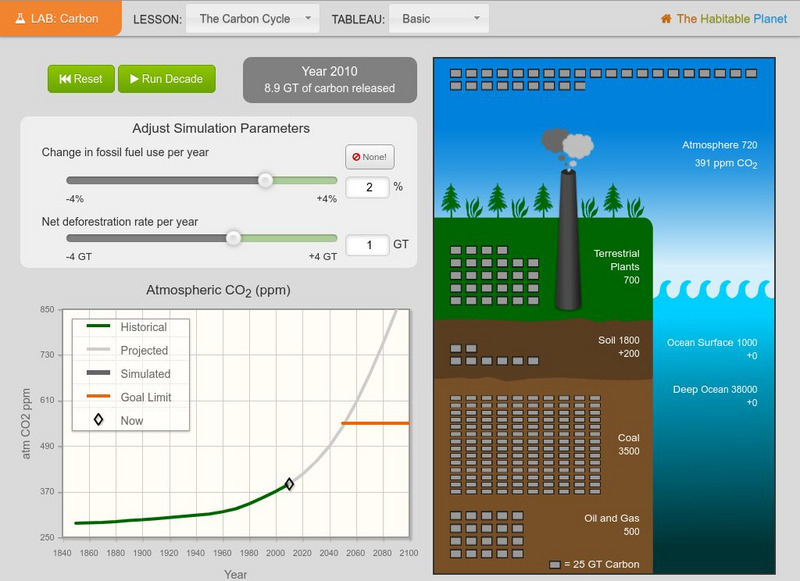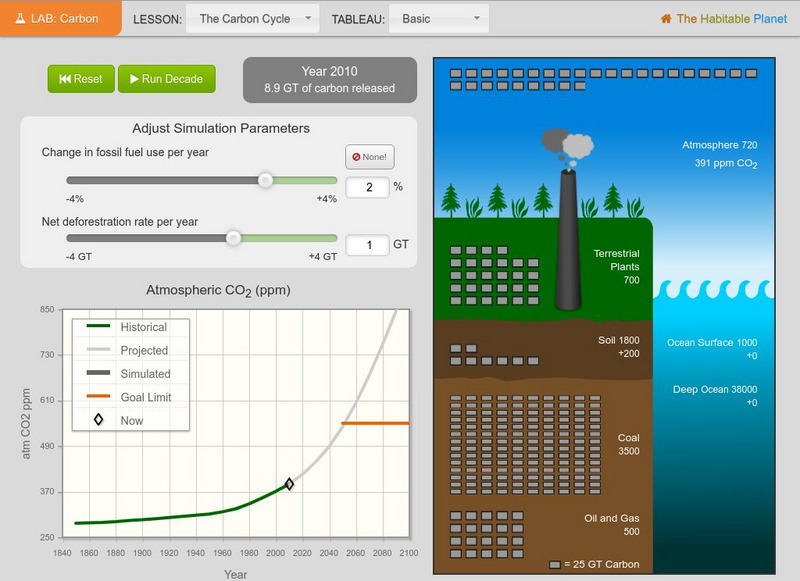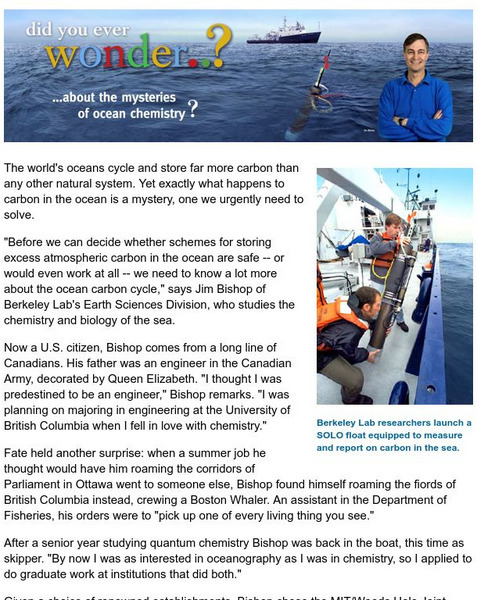Hi, what do you want to do?
Annenberg Foundation
Annenberg Learner: The Carbon Cycle
This lab uses a robust model of the carbon cycle to give students an intuitive sense for how carbon circulates through the atmosphere, biosphere, oceans, and crust. It allows them to experiment with how human input to the cycle might...
Annenberg Foundation
Annenberg Learner: Carbon Lab
This lab uses a robust model of the carbon cycle to give an intuitive sense for how carbon circulates through the atmosphere, biosphere, oceans, and crust.
Center for Innovation in Engineering and Science Education, Stevens Institute of Technology
Ciese: Carbon Imbalance: Algae to the Rescue? [Pdf]
A 95-page learning module that integrates biology, chemistry, and engineering. It includes in-class labs, virtual labs, and engineering design activities. Working with algae, students learn about and investigate how photosynthesis,...
Annenberg Foundation
Annenberg Learner: The Habitable Planet: Carbon Lab
An interactive lab simulation demonstrates the effects of increased carbon in the atmosphere and how that increase contributes to climate change. A data table for student records is available for download.
Climate Literacy
Clean: Carbon Dioxide Sources and Sinks
For this lab activity, students use a chemical indicator (bromothymol blue) to detect the presence of carbon dioxide in animal and plant respiration and in the burning of fossil fuels and its absence in the products of plant...
Other
Koshland Science Museum: Earth Lab: Degrees of Change
This resource provides information on all of the aspects of global warming, climate change, and the future of the earth.
Lawrence Berkeley National Laboratory
Berkeley Lab: Did You Ever Wonder? About the Mysteries of Ocean Chemistry?
Students investigate ocean chemistry. The article discusses Jim Bishop, ocean cycle, the biology of the sea, and carbon in the sea. The resource consists of pictures, quotes, and links to additional resources.
Georgia Department of Education
Ga Virtual Learning: Ap Environmental Science: Science, Matter, Energy, Systems
Through interactive activities, reading exercises, and lab activities, students study how science, matter, energy, and systems are interrelated.







![Ciese: Carbon Imbalance: Algae to the Rescue? [Pdf] Unit Plan Ciese: Carbon Imbalance: Algae to the Rescue? [Pdf] Unit Plan](http://lessonplanet.com/content/resources/thumbnails/455842/large/bwluav9tywdpy2symdizmdeyny0xmdcynjyylwcwy3uxni5qcgc.jpg?1674855345)




